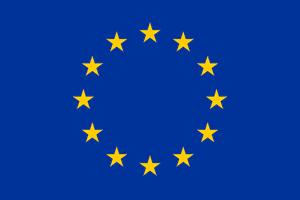Initiatives

Analysis tools for social aspects in the planning process
CLEA PRIETO
Overview
- Location: Gothenburg, Sweden, Scandinavia
- Year:
- Initiator: The City of Gothenburg
Goal
The Social Impact Assessment tool (SKA) aims to strengthen the work on social aspects (e.g. gender equality, children’s rights, equity, antidiscrimination) in transport planning in the Swedish city of Gothenburg.
Measure
Processes for further developing and updating the tool and for carrying out the analyses are ongoing. The work involves new forms of collaboration and common learning processes. The following themes and questions are developed to guide the assessment:
- Cohesive city: Cities are often segregated. How can relationships and links be strengthened in order to bridge physical, mental and social barriers?
- Interaction: Meetings and interaction are important in a city to strengthen the trust and social capital among citizens. A populated urban area with unifying streets and well defined spaces and places provides a framework that creates opportunities for this.
- Everyday life: An everyday life perspective means that people’s everyday routines and activities are taken into account in planning in order to enable robust, accessible and liveable local areas.
- Identity: The sense of belonging to an area that you have is associated with the physical character of the area. But equally important in the forming of an area’s identity, is the individual and collective understanding of security, continuity, participation and opportunities of the place.
Outcome
A matrix of social aspects and geographic areas has been constructed to structure the assessment:
http://transportgenderobservatory.eu/wp-content/uploads/2020/06/Table-post.png
Sources:
[1] City of Gothenburg’s social impact analysis (SIA) tool.
https://goteborg.se/wps/wcm/connect/8439c0bc-9996-44a8-88ca-cbf89a197b1a/OPA_R_sartryck_SKA_WUF.pdf?MOD=AJPERES
Interview with Malin Sunnemar
City of Gothenburg project leader “social sustainability”
Why have you been successful in the area of gender and transport?
The answer is that we are not so successful in terms of gender and transport. Or we do not know if we are so successful. Our method for SIA aims to gather and take into account perspectives in the form of different people’s needs and conditions. However, the method does not force the analysis to describe specific groups such as women and men, the elderly, people with disabilities etc. This means that which / whose perspectives are raised a lot depends on who performs the analysis and what they choose to highlight.
However, our method for SIA addresses issues related to gender. For example, how the urban environment can help people make everyday life work or the safety aspect, which are issues that are difficult to isolate from a discussion linked to gender.
What were the main challenges in implementing the outcomes of social impact assessments?
I would like to raise two challenges:
- To see that the social aspects are something that must be included throughout the entire urban development process. To some extent, we are still wrestling with an image that an SIA equals an inventory of qualities and needs of a site / area compiled in a report. SIA is not a step or report but a process that begins with an inventory followed by goals and measures.
- That everyone should see their responsibility. There are many administrations and actors involved in the development of a new area in Gothenburg. To achieve the goals, all actors need to see their responsibility and contribute to the development.
What further activities in this area would be desirable in the future?
SIA works relatively well in the process for detailed development plan, but there are no formal routines for how the conclusions are passed on to constructing phase. We have therefore produced a proposal for a working method with an action plan to fill the gap between plan and implementation.
The action plan is a guiding and interactive document that follows through the planning process with the aim of translating the goals in SIA into concrete actions that clarify what is needed during the implementation and constructing phase.
Do you have any recommendations for your European colleagues?
The social aspects need to follow through the entire urban development process in order to have a desired impact. And point out responsibilities. Different actors carry different keys to the solution.
